How to Teach Basic Math for Free

It’s true: you can teach kids basic math for free. Anytime, anywhere. Math is all around us, and children are born with the desire to learn.
When my kids were younger, we didn’t have special manipulatives. We never had workbooks and rarely used apps. Their math foundations have been established from daily routines and everyday experiences.
Parents are often worried about buying the best math tools and the pressure of academics. I hope this post can give reassurance! I’ve also created a 1-page printable summary that you can download at the end of the post.
Chalk Academy is reader-supported. Some of the links are affiliate links. When you buy something through an affiliate link, we may earn a very small commission at no cost to you. Details here.
6 Important facts about teaching math to kids
- Many parents and caregivers are capable of teaching their kids math basics.
- Concrete concepts should mastered before interpreting symbols (eg, numerals, equations).
- Every child learns at their own pace. My children are perfect examples of hitting milestones often a year or more apart.
- Basic math can be taught anywhere: indoors and outdoors, home and school.
- A short, spontaneous lesson can be highly effective.
- Children can learn how to count and do math in multiple languages simultaneously.
- Learning is often spiral rather than linear.
Although many of us grew up with workbooks and feel pressured to progress to the next page, reviewing the same concept can deepen our children’s knowledge.
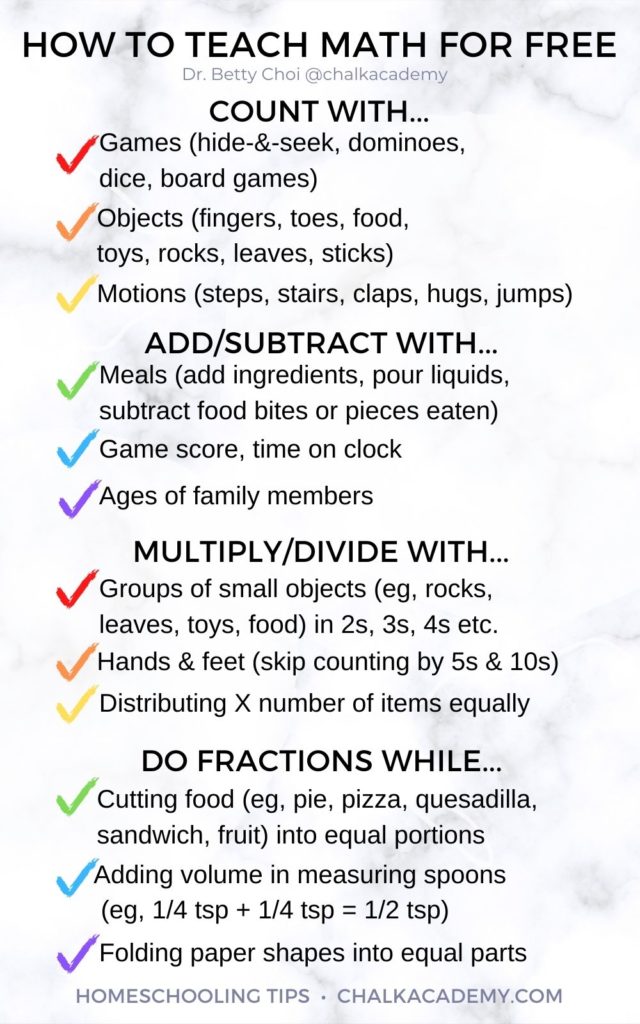
How to teach counting for free
When kids first learn to count, they are usually counting by rote, for example 一, 二, 三, 四, 五, 六… (yī, èr, sān, sì, wǔ, liù / 1, 2, 3, 4, 5, 6…).
My kids mastered rote counting from hide-and-seek, and this fun game offers ample opportunity for counting practice!
Initially, they would rush through the number sequence and lose count. This is common when kids have memorized numbers without knowing what they represent. No worries!
To encourage my kids to improve their counting, I encourage them to count to a high number and demonstrate this myself slowly.
Shhh… let me share a secret with you: I tell them it’s for “more hiding time” and don’t reveal my intent for counting practice.
Half of teaching is about how you sell a lesson in a way that fits a child’s worldview.

Every day counting opportunities
Along with rote counting, counting specific quantities and one-to-one correspondence should be introduced.
- When to start: Before they speak! Kids are absorbing everything from the start. Count fingers and toes, hugs and kisses – this helps them associate numbers with love and affection!
- What to count – anything that’s around!
- Objects: fingers, toes, food (Cheerios, fruit), toys, nature finds (eg, stones, leaves, twigs, pinecones), clothes, utensils, recycled bottle caps, and paper rolls
- Motions: steps, stairs, claps, hugs, jumps, swings at the playground.
- Tips for starting:
- Begin with lower quantities: “1…2…” And then stop. “That’s it! 2!”
- Then, gradually increase the amount.
- Organize what you count in a line to show the start and end.
- For large amounts, show how to group objects by 5s or 10s so that it’s easier to keep track.
- Kids love to be active! For example, counting the steps of a tall staircase can emphasize the grandiosity of big numbers!
Note: you don’t need to buy those popular plastic bears or other counters that will eventually end up in a landfill.
Size, shape, length, patterns
Another skill that can be taught anywhere is comparing object characteristics:
- Size
- Length
- Color
- Texture
- Pattern
This type of math involves grasping and touching everything and moving one’s body to measure the distance.
For example, my kids like to sort big and small nature finds and call them “mommies and daddies” and “babies”!
You can find anything in your house and group them in the aforementioned ways. This also teaches them organization skills!
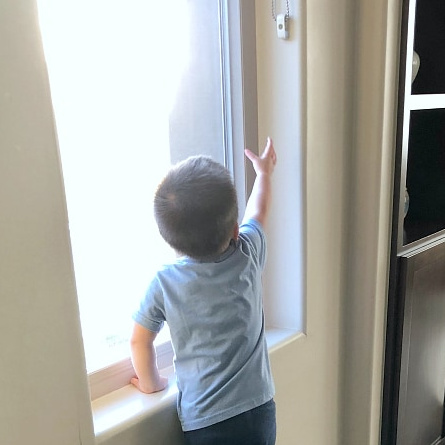
In the above picture, the window chain is obviously way out of reach for my son. But he’s so determined to try and doesn’t even come close. I let him try because he’s developing spatial awareness
Teach basic addition and subtraction for free
Math at mealtime
After counting is established, next comes addition and subtraction.
For example, when my kids ask for strawberries, we can count the number of pieces on their plates.
If they ask for more, this is a chance to learn addition. As they eat, we can practice subtraction.
Baking is another natural way to teach math. With measuring cups, you can teach addition and subtraction by looking at volume measurements. They learn that precision can affect taste; hopefully, the result will be delicious!
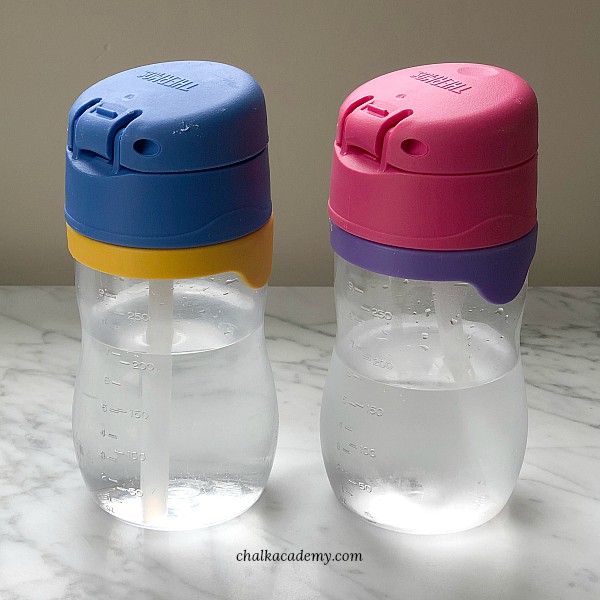
Take notice of what captures your child’s attention; that is what your child wants to learn.
On our occasional restaurant dates, my daughter likes to keep track of the table numbers, and she subtracts by considering how many more tables we have to wait for.
As you model addition and subtraction in different settings, your children will discover more ways to apply math independently!
Addition and subtraction at the park
The playground is a treasure trove of child-led learning opportunities. When my daughter is climbing a ladder and has reached the 3rd rung, I might ask, “How many more steps do you need to climb to reach the top?”
The countdown before going home is always an alarmingly effective way to reinforce subtraction! For example, “You can go down the slide ten more times. Now you went three times, so you have seven more changes before we go home.”
How to teach basic multiplication and division for free
Skip-counting, multiplication, and division can be taught in a child-led way, too!
Remember: work with what’s in front of you, and try not to stress about making anything special.

For example, we can group rocks by 2s and demonstrate that three groups of 2 rocks are equal to 6 (3 x 2 = 2 + 2 + 2 = 6), and then by 3s, 4s, etc.
Last year, my daughter learned to skip count and multiply by 5 with a simple hand-counting activity!

You can incorporate it with whatever your child is working on.
This week, we did a quick multiplication “lesson” with cute turtles my daughter made.
We needed three craft sticks per turtle, and my daughter wanted to make three turtles. In less than 30 seconds, we reviewed that 3 x 3 = 9.
The next day, she decided to make two more turtles. We discussed that since 3 x 3 = 9 and 3 x 2 = 6, 9 + 6 = 15, 3 x 5 must equal 15.
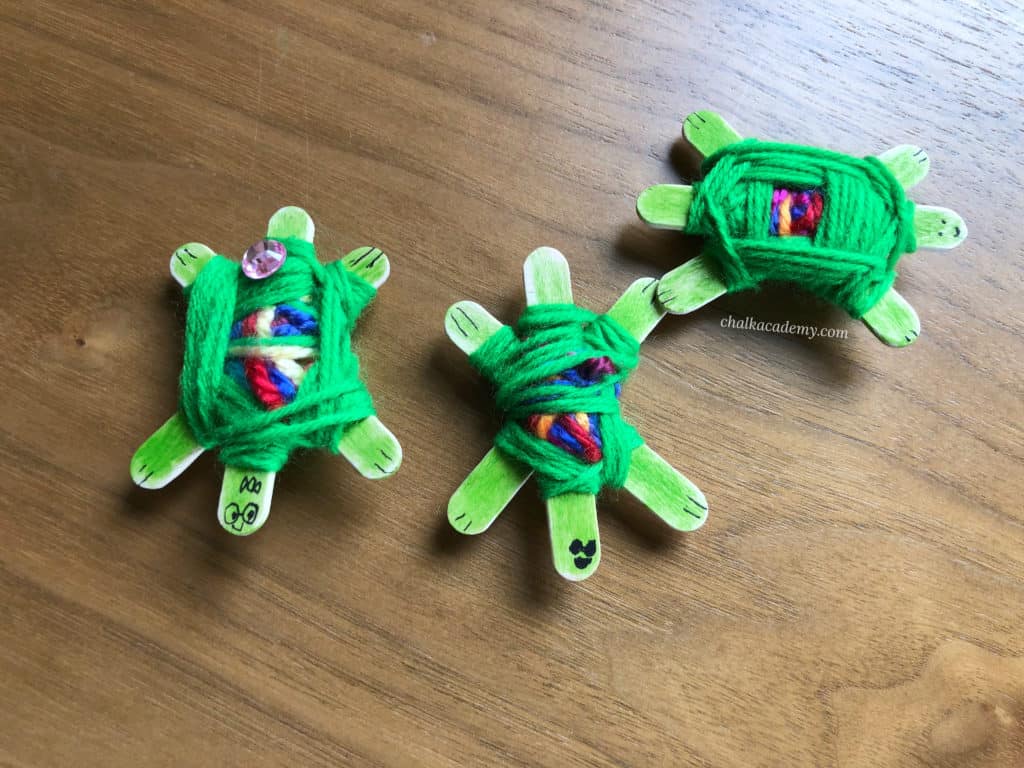
We also practice division through everyday life. For example, when we share food or toys and want to allocate equally, this is a relevant example of division.
Most commonly, we divide by 2 (between siblings) and 3 and 4, depending on how many family members are at home.
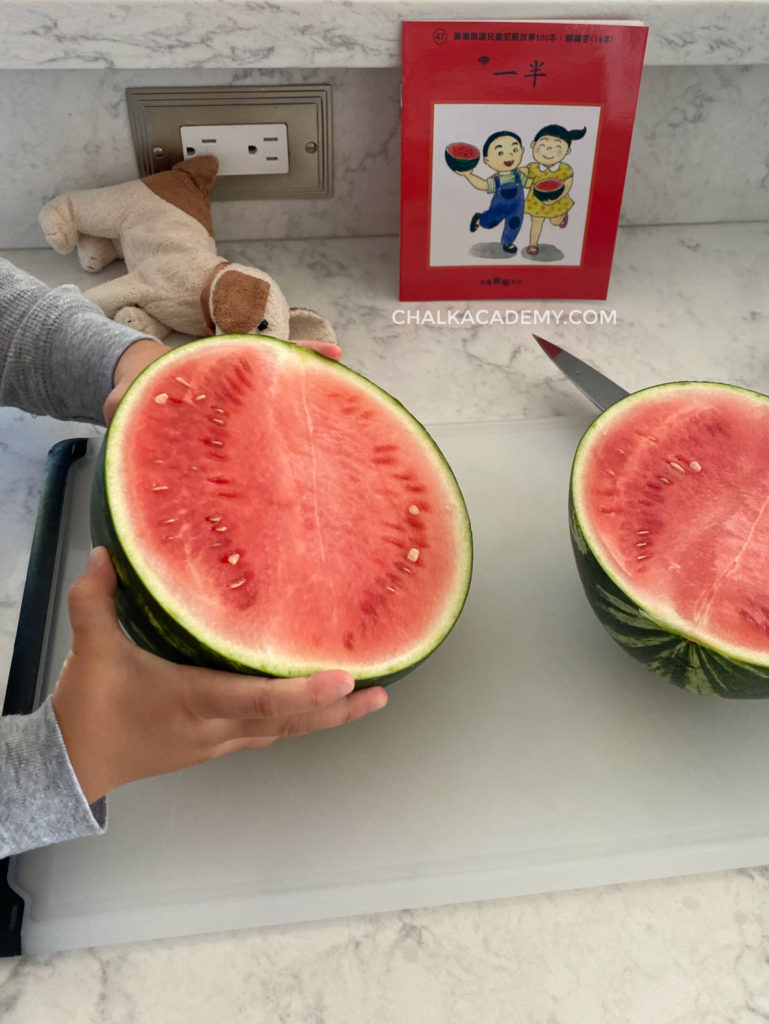
Fractions
When baking, I might deliberately select a smaller volume of a measuring spoon to review fractions. If we scoop 1/4 tsp twice, we can review 1/4 tsp + 1/4 tsp = 1/2 tsp!
We can also practice fractions when cutting whole food into equal portions, such as pies, sandwiches, quesadillas, or pancakes. Through cutting, my daughter realized that dividing her sandwich into 1/7 portions was difficult.
Have fun with verbal word problems
Verbal word problems are a fun way to integrate storytelling and math!
We make up funny stories such as:
- “姐姐 has 73 dresses, 弟弟 pooped on 11 dresses, how many dresses are clean?”
- “If we bought 12 strawberries from the market, and everybody in our family wants the same amount, how many strawberries should each person get?”
- “妈妈 When you are 100 years old, I will be 70, and 弟弟 will be… 67!!”
Introducing numerals and equations
The concepts did not require number symbols in the above examples of counting and basic math.
Children must hold math in their hands before they can hold it in their head.
Unknown
This is similar to how learning a language begins with listening and speaking before reading and decoding text.
How to introduce number symbols
- Point them out in the environment: houses, elevators, mailboxes, page numbers
- Making numbers with pipe cleaners, play dough
Encouraging a love of learning math
One of my favorite memories is of my daughter looking for the smallest and largest numbers at the Post Office.
While she called out various numbers in Chinese, my son ran from mailbox to mailbox and tried to mimic what she said. I had to suppress my urge to rush onto the next task.
I’m grateful that my children remind me to pause and see the amazing world of learning from their perspective.
When the rest of the world seems to worry about which workbook or app to get, remember that free, meaningful lessons can be found throughout a regular day.

Printable summary of basic math teaching tips
Click below to download a 1-page printable summary when you need a quick reference!
Have questions about teaching math?
I’d love to hear your thoughts about teaching math at home and how it’s been going for your family. Please leave a comment below.
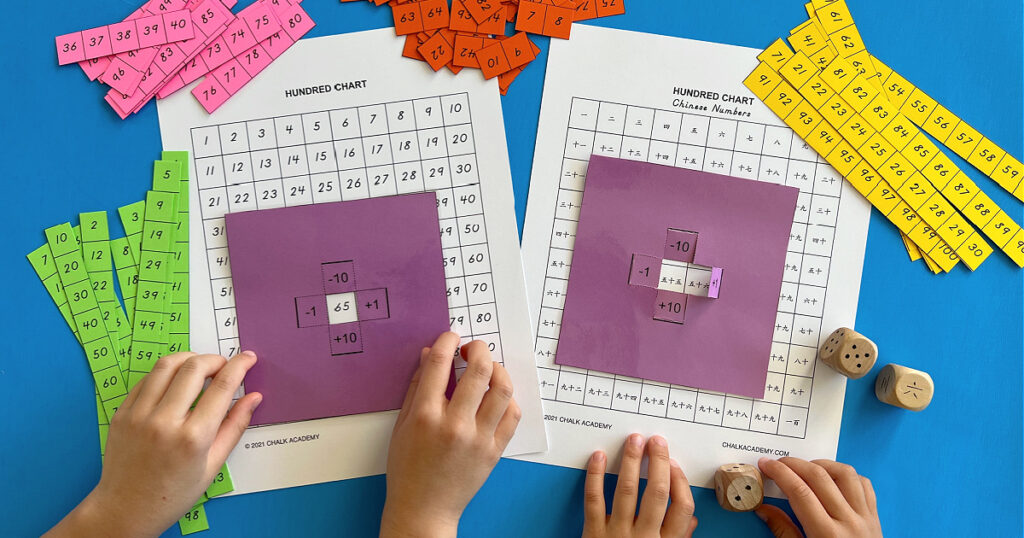

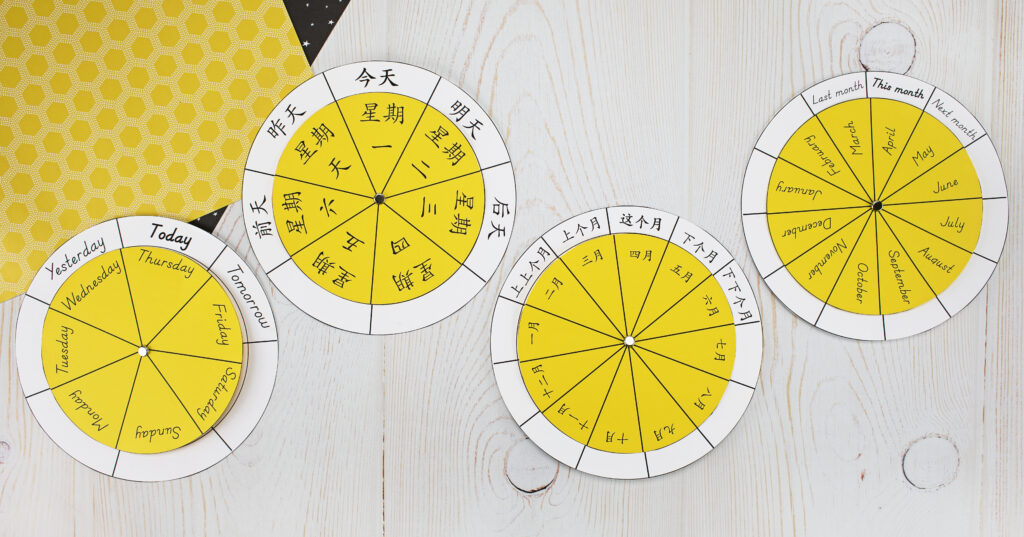

Wow such an amazing post! My almost two year old is starting to count out loud and it makes me excited to continue to teach her practically like you mentioned and now I have some tips to keep it up! Thank you.
You’re most welcome, Jenna! I’m so happy to hear that our ideas can help, and that you and your toddler can have fun with exploring numbers naturally and practically! 🙂
I was looking for some good blogs related to maths hopefully your article will help to solve my children problems in this subject.Thanks for sharing.
This is very helpful, thanks Betty! I’d like to print the one pager out to remind myself, but the download doesn’t seem to work, could you please take a look? Thanks!
Link doesn’t work for me either. Is there somewhere else to find the summary?
Also, thank you for providing such useful tips in the blog post. Much appreciated!
Hi Jennifer and Diana! Thanks for letting me know about the broken link – I have just fixed it. Please let me know if I can help with anything else!